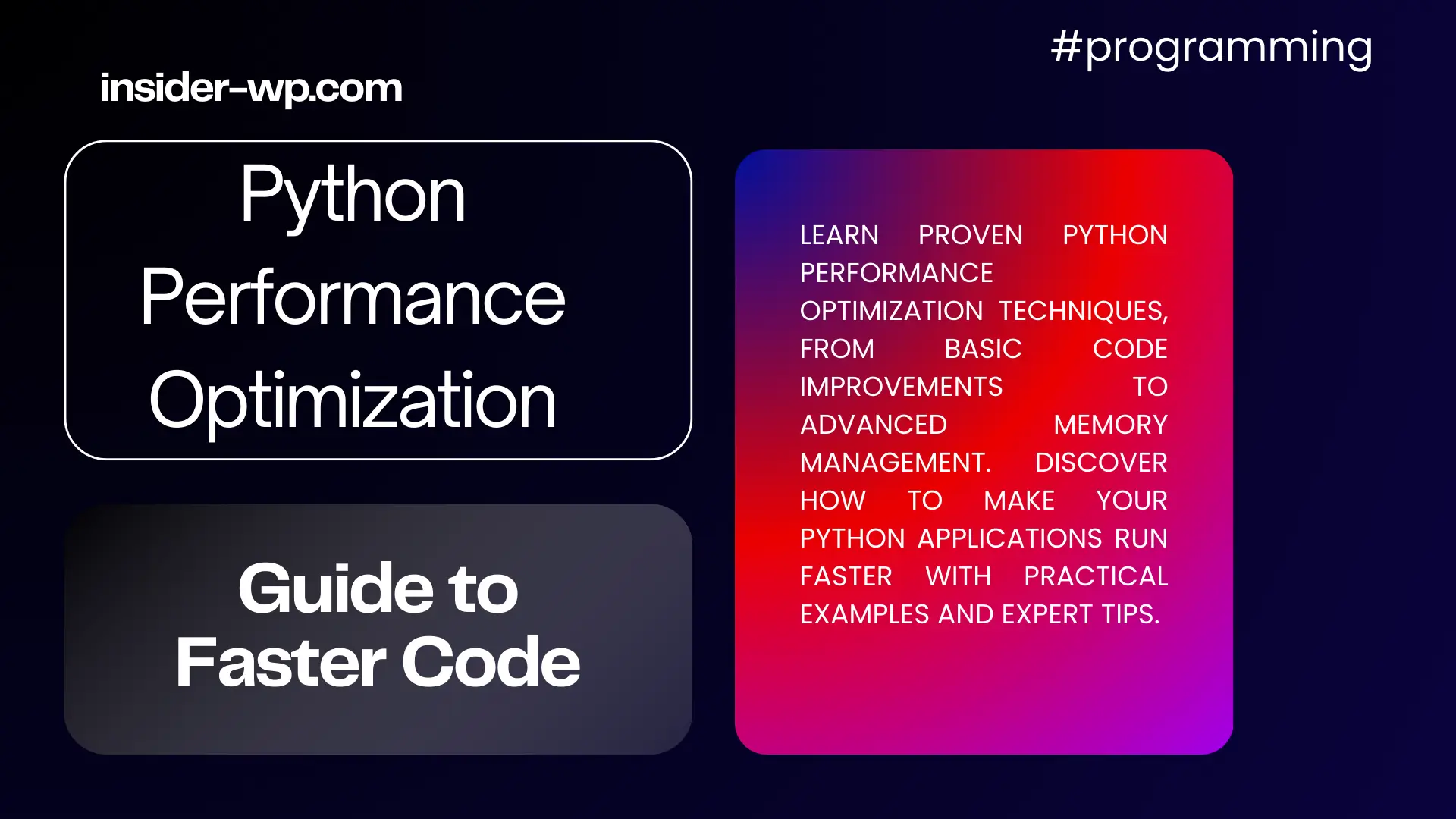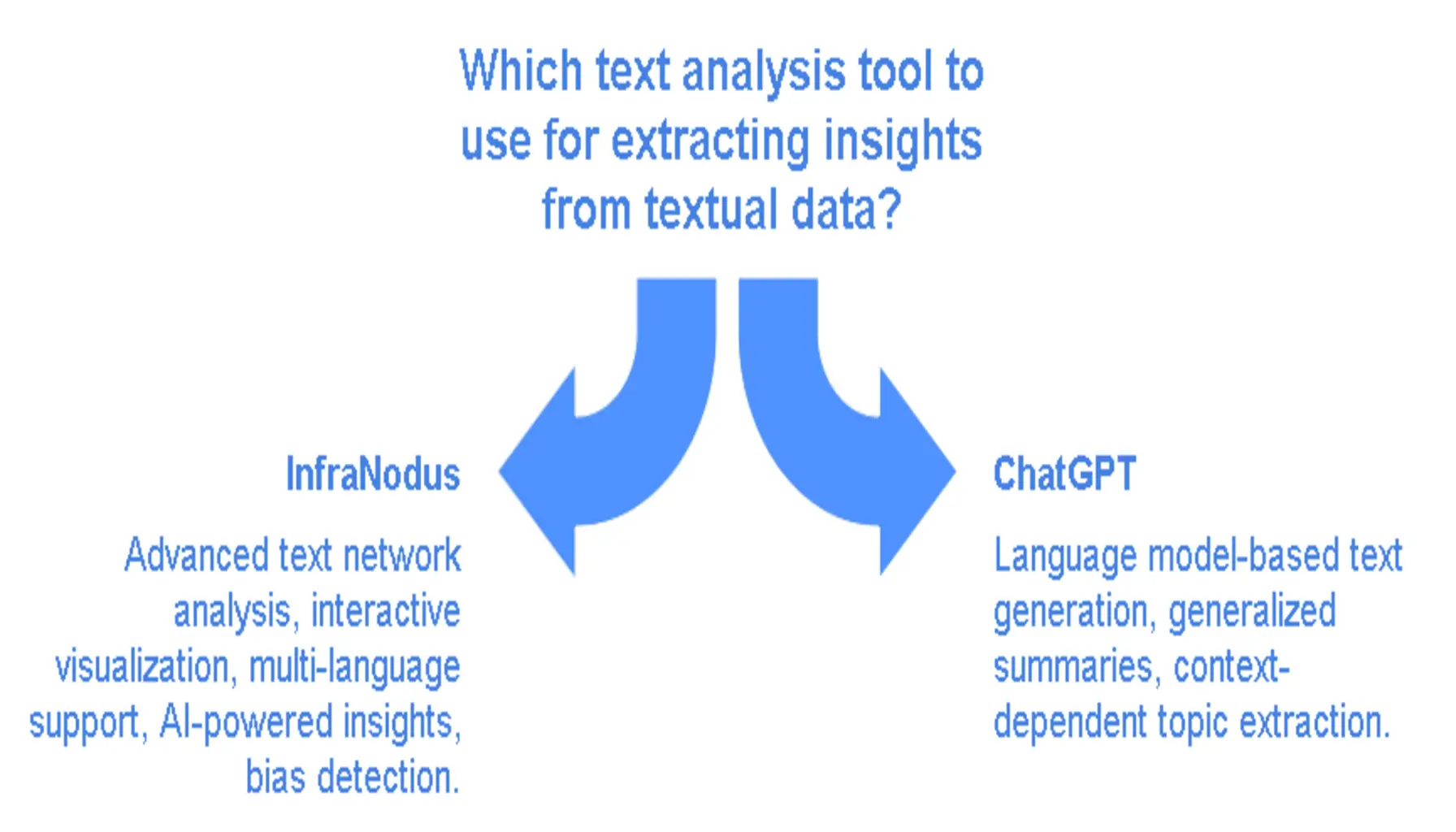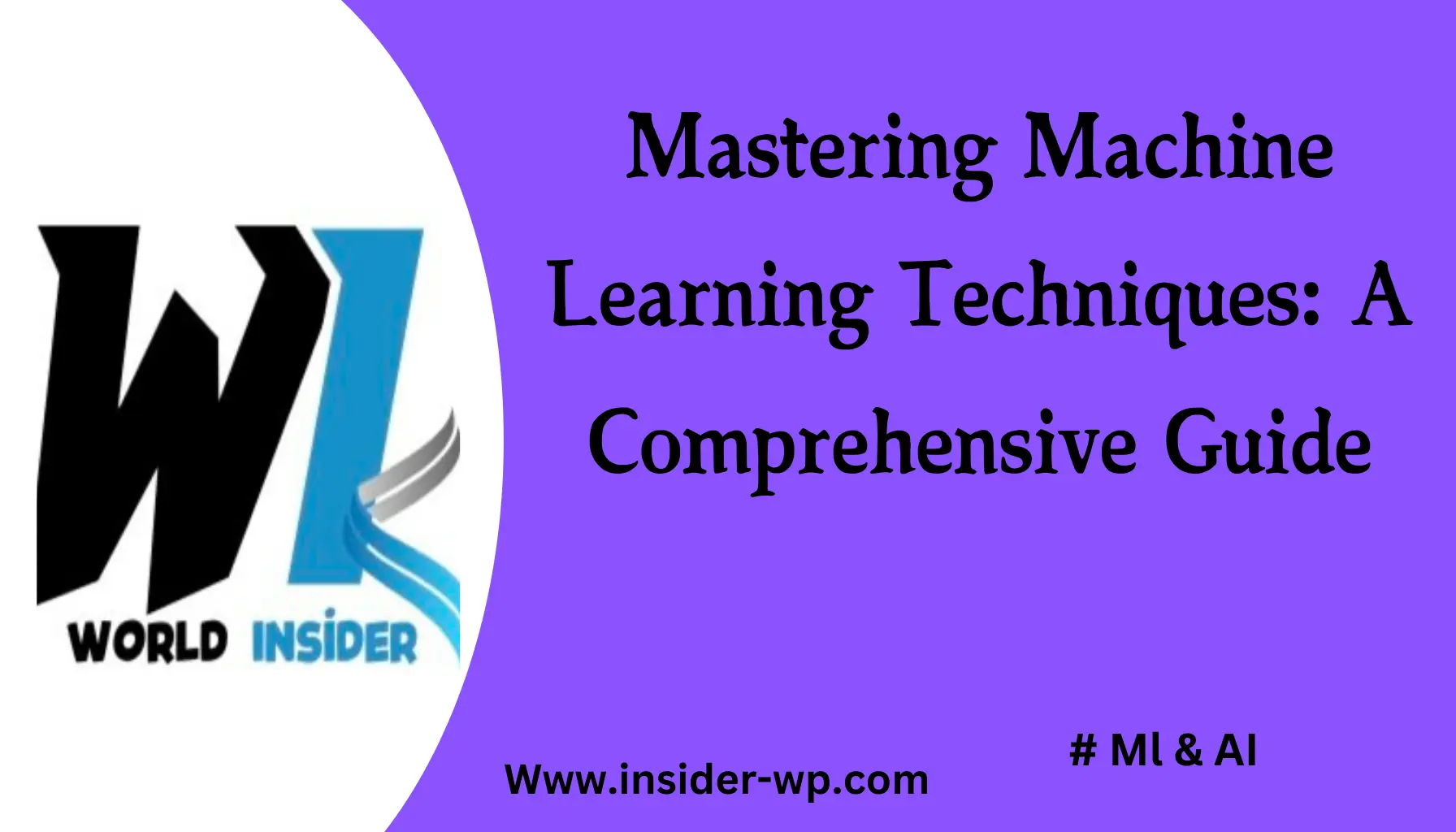Master NLP Basics: Guide to Unlocking Language Power

Natural language processing (NLP) stands at the intersection of computer science, artificial intelligence (AI), and linguistics, aimed at bridging the gap between human communication and computer understanding [1] [3]. It tackles the complexity and inherent challenges of human language, employing techniques that enable machines to parse, understand, and respond to text and speech in a manner akin to human interaction [1] [2] [3]. This field is propelled by advancements in AI and machine learning, embedding functionalities like sentiment analysis, machine translation, and chatbots into diverse applications, thereby reshaping how we interact with technology and data [2].
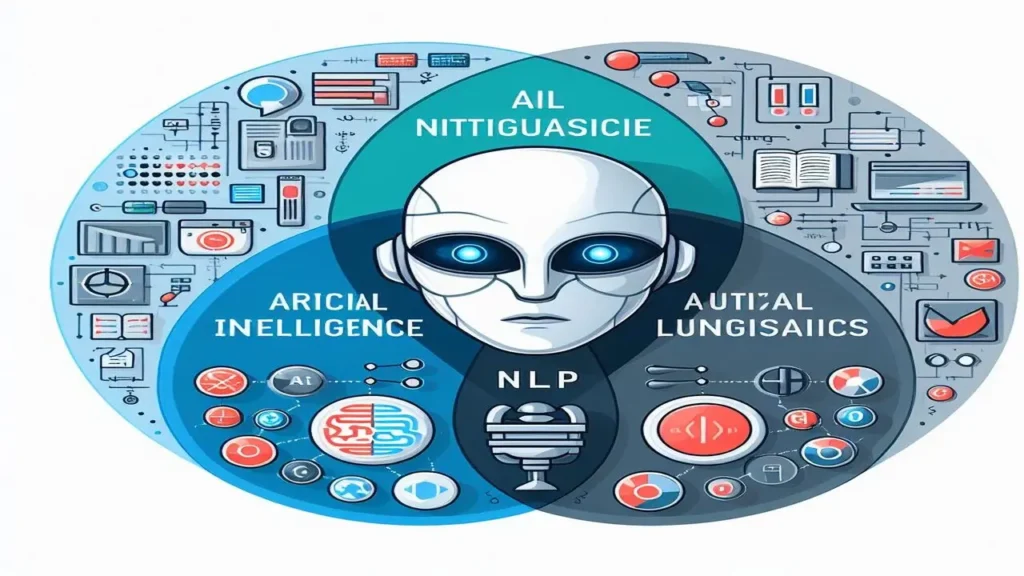
As we delve into NLP’s core, this article will explore its foundational components, including tokenization, named entity recognition, and parsing, alongside advanced elements like convolutional and recurrent neural networks, and transformers [1] [2] [3]. By dissecting the role of deep learning in enhancing Natural language processing capabilities and its applications across various industries, we aim to provide a comprehensive beginner’s guide. This narrative will not only offer insights into the evolution and future directions of Natural language processing but also outline the ethical considerations and challenges that accompany NLP’s integration into AI systems [2] [3].
Understanding NLP and Its Components
Natural Language Processing is an important branch of artificial intelligence that studies the interface between computers and human language. This interaction allows computers to perform a variety of language-related tasks by understanding, interpreting, and generating human language [3] [6] [7]. Natural language processing incorporates multiple components and utilizes various techniques to achieve its objectives. Here, we provide a detailed overview of the key components and techniques of Natural language processing.

Components of NLP
Natural Language Processing involves several components that work together to process and understand human language:
- Text Preprocessing: This includes techniques like tokenization, stop word removal, stemming, and lemmatization which prepare text for further processing [13] [14].
- Parsing and Text Representation: Techniques such as syntax parsing help in structuring textual data, making it easier for machines to interpret [5].
- Named Entity Recognition and Sentiment Analysis: These components identify names, places, and expressions of sentiments within the text, providing deeper insights into the content [5].
- Language Modeling and Machine Translation: These are crucial for generating and translating text in a meaningful way across different languages [5].
- Speech Recognition and Text Generation: These enable machines not only to understand spoken language but also to generate human-like responses [5].
- Information Retrieval and Text Classification: These components help in extracting useful information and categorizing text into predefined categories [5].
- Advanced Analysis: This includes discourse integration, coreference resolution, and pragmatic analysis to understand text beyond basic meanings [3].
Techniques in NLP
To effectively manage and manipulate human language, Natural Language Processing employs a variety of techniques:
- Syntactic Analysis (Syntax): It involves arranging words and phrases to create well-structured sentences, focusing on the rules that govern the structure of sentences [11].
- Semantic Analysis (Semantics): This technique helps in understanding the meaning conveyed by a text or speech. It involves tasks like word sense disambiguation and relationship extraction [6] [11].
- Pragmatics: Deals with the real-world use of language, ensuring that the meaning is understood based on the context, the speaker’s intent, and shared knowledge [11].
- Discourse: Analyzes the use of language in texts and conversations to understand how sentences relate to each other, enhancing the coherence of the text [11].
NLP Tools and Approaches
Several tools and approaches are essential for implementing Natural language processing effectively:
- Programming Languages: Python is widely used in Natural language processing for scripting and developing algorithms [4].
- Libraries and Frameworks: Tools like the Natural Language Toolkit (NLTK) provide support for many Natural language processing tasks [4].
- Statistical NLP and Machine Learning Models: These are crucial for making sense of large volumes of text data by learning from patterns [4].
This tabulated summary provides a clear and structured overview of the core components and techniques in Natural language processing, illustrating how they contribute to understanding and generating human language effectively.
| Component/Technique | Description | Key Tasks/Tools |
| Text Preprocessing | Prepares raw text for processing and analysis | Tokenization, Stemming, Lemmatization |
| Parsing and Text Representation | Structures textual data for interpretation | Syntax Parsing |
| Named Entity Recognition | Identifies proper nouns and classifies them into categories | Part-of-Speech Tagging |
| Sentiment Analysis | Determines the attitude or emotion of the text | Analyzing opinions, emotions |
| Language Modeling | Generates text based on probability | Machine Translation, Text Generation |
| Speech Recognition | Converts spoken language into text | Voice-activated systems, Transcription |
| Information Retrieval | Extracts relevant information from large databases | Search engines, Recommendation systems |
| Text Classification | Categorizes text into organized groups | Spam detection, Topic discovery |
Evolution of NLP
Early Beginnings
The journey of natural language processing began in the 1940s with initial thoughts on machine translation, suggesting the possibility of computers translating texts between languages [19][18][17][16][15][14][13][12]. This period set the foundation for future advancements in NLP and AI.

Turing’s Influence
In the 1950s, Alan Turing introduced the concept of a “thinking” machine through his Turing Test, which greatly influenced the fields of artificial intelligence and natural language processing, marking a pivotal moment in the evolution of computing [19][18][17][16][15][14][13][12].
Linguistic Revolution
Noam Chomsky’s groundbreaking work in 1957 with the publication of Syntactic Structures revolutionized linguistic theories, introducing Phase-Structure Grammar, which became a cornerstone for modern linguistic and NLP research [19][18][17][16][15][14][13][12].
Pioneering Applications
The development of ELIZA in 1964 by Joseph Weizenbaum, which mimicked a psychiatrist through typewritten interactions, showcased the practical applications of Natural language processing and laid groundwork for conversational agents [19][18][17][16][15][14][13][12].
Institutional Review
The establishment of the Automatic Language Processing Advisory Committee (ALPAC) in 1966 by the U.S. National Research Council was a significant step to evaluate and guide the progress of NLP technologies [19][18][17][16][15][14][13][12].
Resurgence and Statistical Methods
After a period of reduced activity, the 1980s marked a resurgence in NLP research, focusing on expert systems and statistical methods, moving away from rule-based systems [19][18][17][16][15][14][13][12].
Neural Networks and Machine Learning
The introduction of neural network-based language models in 2001 by Yoshio Bengio and his team represented a major shift towards using deep learning techniques in Natural language processing [17][16][15].
Advancements in AI Assistants
2011 was a landmark year with the introduction of Apple’s Siri, an NLP/AI assistant that utilized advanced machine learning techniques for speech recognition and responding to voice commands, setting a new standard for interactive technology [17][16][15].
This table encapsulates the significant milestones that have shaped the field of Natural language processing, highlighting the evolution from early theoretical concepts to sophisticated applications in modern technology.
| Year | Milestone | Contribution |
| 1940s | Inception of machine translation | Laid the groundwork for NLP |
| 1950s | Turing’s proposal of the Turing Test | Inspired AI and Natural language processing |
| 1957 | Publication of Syntactic Structures | Introduced new linguistic theories |
| 1964 | Development of ELIZA | Early example of a conversational agent |
| 1966 | Formation of ALPAC | Evaluated and guided NLP research |
| 1980s | Shift to statistical methods | Marked a significant change in Natural language processing research approach |
| 2001 | First neural network-based language model | Pioneered the use of deep learning in Natural language processing |
| 2011 | Launch of Siri | Integrated advanced ML techniques in practical applications |
Main Components of NLP

Natural Language Processing encompasses a variety of tasks that are critical for understanding and generating human language. Each component plays a specific role in the process, from recognizing speech patterns to generating text that mimics human conversation. Below is a detailed breakdown of these essential NLP tasks:
| NLP Task | Function |
| Speech Recognition | Converts spoken language into a digital format that machines can manipulate and analyze [4] . |
| Part of Speech Tagging | Identifies each word’s role in a sentence, such as nouns, verbs, adjectives, etc. [4] . |
| Word Sense Disambiguation | Determines the meaning of a word based on its context within a sentence [4] . |
| Named Entity Recognition | Recognizes and categorizes proper nouns (people, places, organizations) in text [4] . |
| Co-reference Resolution | Identifies when different words refer to the same entity in a text, enhancing understanding [4] . |
| Sentiment Analysis | Analyzes text to determine whether the sentiment communicated is favorable, negative, or neutral. [4] . |
| Natural Language Generation | Generates human-like text based on input data [4] . |
This structured overview of NLP tasks highlights the complexity and diversity of processes involved in modeling human language for computational purposes. Each task contributes uniquely to the interpretation and generation of language, forming the backbone of various applications in technology and communication.
Applications of NLP in Various Industries
Healthcare
Natural Language Processing significantly enhances healthcare services by analyzing patient data and medical records, identifying patterns for better diagnoses and treatments. It also extracts valuable information from medical literature, keeping healthcare professionals updated on the latest research [27][28].

Finance
In the finance sector, NLP analyzes financial data from reports and news articles, aiding traders and investors in making informed decisions. It also simplifies the extraction of information from financial documents, enhancing analysts’ ability to stay current with company updates [28].
Retail
Natural language processing technologies analyze customer reviews and feedback through sentiment analysis to gauge customer opinions about products. Additionally, they optimize and update product listings by extracting information from product descriptions [28].
Marketing
Marketing benefits from Natural language processing by analyzing social media data to assess brand perception and optimize messaging based on information extracted from marketing materials [28].
Manufacturing
In manufacturing, Natural language processing analyzes sensor data and equipment logs to identify patterns that can enhance efficiency and reduce costs. It also helps engineers and technicians by extracting information from technical documents [28].
Human Resources
NLP aids human resources by analyzing resumes and job descriptions to identify the best candidates for positions. It further assists managers by extracting data from employee performance reviews, which helps in recognizing top performers and areas needing improvement [28].
Customer Service
Natural language processing improves customer service by analyzing interactions to understand customer needs and concerns. It also helps service representatives by extracting information from customer emails, enabling quicker issue resolution [28].

Law Enforcement
In law enforcement, Natural language processing is used to analyze criminal records and identify patterns that aid in investigations and arrests. It also keeps investigators informed by extracting information from police reports [28].
Media and Entertainment
Natural language processing plays a pivotal role in media and entertainment by analyzing news articles and social media posts to identify trending topics and content that resonates with audiences. It also assists in content generation for various reporting needs [28].
Education
In the educational sector, Natural language processing analyzes student data to help educators understand performance and identify areas for improvement. It supports both teachers and students by extracting information from textbooks and educational materials [28].
E-commerce
NLP enhances e-commerce through chatbots that provide customer support and improve user experience. These bots handle FAQs, schedule appointments, and assist in order processing and tracking. In-store bots improve the shopping experience by guiding customers, suggesting products, and providing promotional information [29].
E-commerce Market Intelligence
Natural language processing extracts and analyzes e-commerce data to detect consumer sentiments and market trends, which helps in optimizing marketing strategies [29].

E-commerce Semantic-based Search
Semantic-based search powered by Natural language processing improves product visibility by understanding the context of search queries and suggesting appropriate responses [29].
| Industry | Application of NLP | Key Benefits |
| Healthcare | Analyzing patient data, extracting medical research | Improved diagnoses, updated medical knowledge |
| Finance | Analyzing financial reports, extracting document information | Informed trading decisions, updated analyses |
| Retail | Sentiment analysis of customer feedback, updating listings | Enhanced customer insights, optimized listings |
| Marketing | Social media analysis, messaging optimization | Improved brand perception, targeted marketing |
| Manufacturing | Analyzing sensor data, extracting technical document information | Increased efficiency, cost reduction |
| Human Resources | Analyzing resumes, extracting performance review data | Efficient recruitment, performance management |
| Customer Service | Analyzing customer interactions, extracting email information | Improved service quality, faster issue resolution |
| Law Enforcement | Analyzing criminal records, extracting report information | Enhanced investigation effectiveness |
| Media and Entertainment | Content analysis for trends, automated content generation | Trend identification, efficient content creation |
| Education | Analyzing student data, extracting educational material information | Enhanced learning insights, updated resources |
| E-commerce | Chatbot interactions, semantic search, market intelligence | Improved customer experience, market adaptation |
This detailed breakdown showcases the diverse applications of NLP across various industries, highlighting how it contributes to enhancing efficiency, accuracy, and user engagement.
The Importance of AI and Machine Learning in Natural Language Processing
Artificial Intelligence (AI) and Machine Learning (ML) play pivotal roles in enhancing the capabilities of Natural Language Processing . They contribute significantly to the automation, optimization, and sophistication of language-based applications. Below, we explore the specific contributions and advancements facilitated by AI and ML in the realm of Natural language processing.

Integration with Advanced Technologies
Natural language processing is increasingly being integrated with other cutting-edge technologies such as the Internet of Things (IoT) and blockchain. This integration facilitates more automated and optimized processes, ensuring safer and more efficient communication between devices and systems [21].
Enhancement of Language Comprehension and Interaction
AI empowers NLP systems to comprehend and extract meanings from written or spoken language, which enables the development of more natural and intuitive user interfaces such as chatbots, voice assistants, and virtual reality interfaces [30]. These advancements make interactions with technology more seamless and user-friendly.
Data Analysis and Summarization
Through Natural language processing, AI can process vast amounts of text data, analyzing sentiments, identifying trends, and generating summaries. This capability is crucial in fields where quick interpretation of large datasets is required, such as in media monitoring or market trend analysis [30].
Language Translation
AI-enhanced NLP tools translate languages with higher accuracy, which is vital for global communication and knowledge sharing. This not only helps in breaking language barriers but also supports multicultural interactions in business and social contexts [30].
Learning from Text Data
Machine learning algorithms enable NLP systems to learn from text data, recognize patterns, and understand the relationships in language. This aspect is fundamental for systems that adapt and evolve based on new information, without human intervention [30].
Handling of Complex Language Features
Understanding complex language features such as sarcasm, humor, and bias is crucial for effective communication. Natural language processing equipped with ML can analyze these nuanced aspects of text data, enhancing the accuracy of sentiment analysis and contextual understanding [25].
This table and the detailed points above illustrate how AI and ML not only support but also drive the advancement of Natural language processing by providing tools and techniques that enhance its effectiveness and applicability across various domains.
| AI/ML Contributions to NLP | Description | Applications |
| Comprehensive Integration | Integrates with IoT and blockchain for optimized processes | Automated systems, Secure communications [21] |
| Language Comprehension | Enhances understanding and interaction capabilities | Chatbots, Voice assistants [30] |
| Data Summarization | Analyzes and summarizes large text datasets | Market analysis, Quick data interpretation [30] |
| Accurate Translation | Provides high accuracy in language translation | Multilingual communication, Global business [30] |
| Pattern Recognition | Learns and recognizes language patterns and relationships | Adaptive learning systems, AI training [30] |
| Complex Language Handling | Analyzes nuanced language features like sarcasm and bias | Enhanced sentiment analysis, Accurate modeling [25] |
NLP Techniques
Natural Language Processing employs a diverse array of techniques to enhance the interaction between humans and machines through language. These techniques are foundational to various applications ranging from sentiment analysis to machine translation and information retrieval.
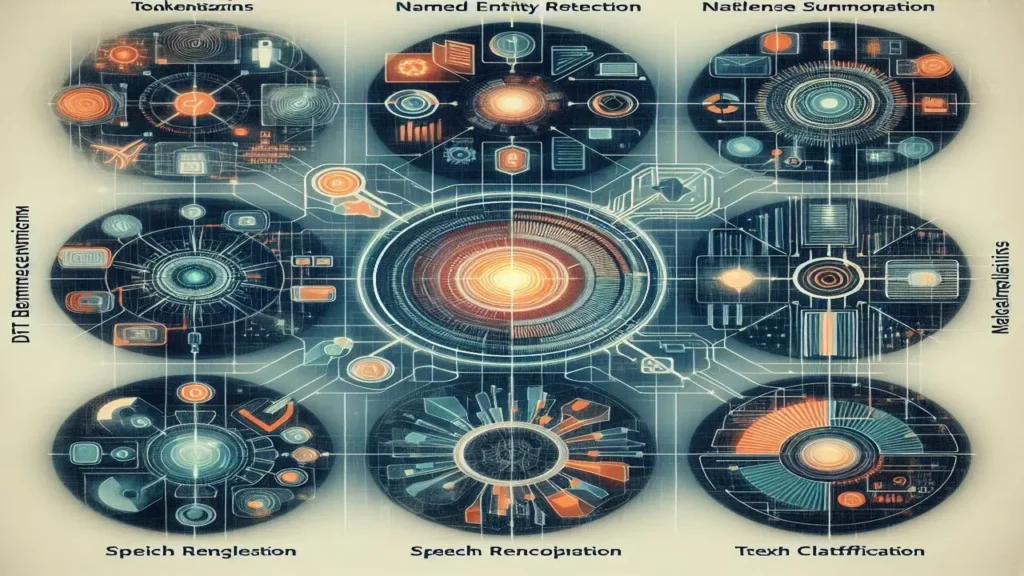
Key NLP Techniques and Their Applications
- Tokenization:
- Parsing:
- Named Entity Recognition (NER):
- Sentiment Analysis:
- Text Summarization:
- Machine Translation:
- Converts text from one language to another, maintaining the meaning and context [24].
- Facilitates communication across different language speakers.
- Speech Recognition:
- Converts spoken language into a digital format that can be analyzed by machines [24].
- Enables voice-activated systems and enhances user accessibility.
- Text Classification:
Advanced Techniques in NLP
- Deep Learning Models:
- Utilizes models like BERT, XLNet, and GPT-3 for understanding and generating human language [17].
- These models have significantly improved the accuracy and contextual understanding of NLP applications.
- Lemmatization and Stemming:
- Stop Words Removal:
| Technique | Description | Key Applications |
| Tokenization | Breaks text into smaller, manageable units (tokens). | Text parsing, Initial data preparation |
| Named Entity Recognition | Identifies and classifies textual items within predetermined categories. | Information extraction, Data categorization |
| Sentiment Analysis | Analyzes the emotional tone of text. | Customer feedback analysis, Social media monitoring |
| Text Summarization | Creates concise summaries of lengthy texts. | Information retrieval, Decision making |
| Machine Translation | Translates text from one language to another. | Multilingual communication, Content localization |
| Speech Recognition | Converts spoken language into text. | Voice-activated interfaces, Transcription services |
| Text Classification | Categorizes text into organized groups based on content. | Spam detection, Content sorting |
This detailed exploration of Natural language processing techniques underscores their critical role in enhancing machine understanding and processing of human language, which is pivotal for various technological and business applications.
The Role of Data in NLP
Data Preprocessing in NLP
Data preprocessing is a critical step in natural language processing, involving several techniques to prepare text data for analysis. These techniques include:
- Stemming: Reduces words to their root form, helping in the standardization of text data for further analysis [23].
- Lemmatization: Similar to stemming but more sophisticated, it involves reducing words to their lemma or dictionary form [23].
- Sentence Segmentation: Breaks text into individual sentences, providing a clearer structure for analysis [23].
- Stop Word Removal: Eliminates common words that may not contribute significantly to the meaning of the text [23].
- Tokenization: Splits text into smaller units such as words or phrases, which are easier to analyze [23].

Structuring Unstructured Data
To apply machine learning techniques effectively in Natural language processing, it is essential to convert unstructured text data into a structured format. Typically, this involves organizing data into a tabular format, which is more amenable to analysis and model training [25].
Addressing Bias in NLP Models
Bias in Natural language processing models can significantly affect their performance and fairness. Bias may arise from several sources:
- Quality of Data: Poor data quality can lead to inaccurate models that do not perform well in real-world scenarios [26].
- Choice of Algorithms: Certain algorithms may perpetuate or amplify existing biases in the data [26].
- Developer Assumptions: Assumptions made during the model development process can introduce bias [26].
To reduce these biases, it is critical that:
- Develop diverse and representative datasets [26].
- Implement specific techniques aimed at reducing bias [26].
- Conduct regular audits of the models to ensure fairness and accuracy [26].
| Aspect | Description | Impact on NLP Models |
| Data Preprocessing | Involves cleaning and organizing data into a usable format. | Essential for accurate and effective analysis. |
| Conversion to Structured Data | Structured data is more suitable for machine learning models. | Facilitates easier application of ML techniques. |
| Bias Mitigation | Involves strategies to reduce bias in data and algorithms. | Increases fairness and accuracy of NLP applications. |
The Expanding Role of Big Data in NLP
The surge in data generation has made big data an integral part of Natural language processing. This vast amount of data provides a rich source of information that can be leveraged to enhance the performance and capabilities of Natural language processing models. Big data allows for the processing of unstructured data, which is prevalent in natural language and contains nuanced information that can significantly improve model outcomes [9].
Challenges in Speech Data Collection
Collecting speech data presents unique challenges that need to be addressed to build effective speech recognition systems:
- Volume of Data: Collecting a sufficient amount of data to train robust models [32].
- Data Collection Planning: Effective planning is crucial to ensure that the data collected is relevant and of high quality [32].
- Project Approach: Choosing the right approach for data collection impacts the quality and usability of the data [32].
Qualitest’s methodology for speech data collection emphasizes collaboration, knowledge sharing, data privacy, and a structured approach to design and execution, ensuring high-quality data collection for speech recognition applications [32].
Learning Resources for NLP
Online Courses and Books
- “Modern Deep Learning Techniques Applied to Natural Language Processing” by Fabio Chiusano (2019): Provides an overview of trends in deep learning-based Natural language processing, including theoretical descriptions and implementation details of various NLP tasks and applications [37].
- “Deep Learning for NLP with PyTorch” by fast.ai: A tutorial that teaches students through important concepts of deep learning programming using PyTorch, with a focus on NLP [37].
- “Coursera Natural Language Processing specialization” by DeepLearning.ai: A comprehensive four-month-long online course covering Natural language processing from A to Z [37].
- “Accelerated Natural Language Processing” by Machine Learning University: Lectures covering Natural language processing and text processing, recurrent neural networks, and transformers [37].
- “Natural Language Processing with Deep Learning” by Stanford University: An introduction to cutting-edge research in Deep Learning for Natural language processing [39].
- “Applied Natural Language Processing” by UC Berkeley: Focuses on using existing NLP methods and libraries in Python in new and creative ways [39].
- “Natural Language Processing (CMU)” by CMU: Covers various ways to represent human languages and building models for translation, summarization, extracting information, question answering, and more [39].
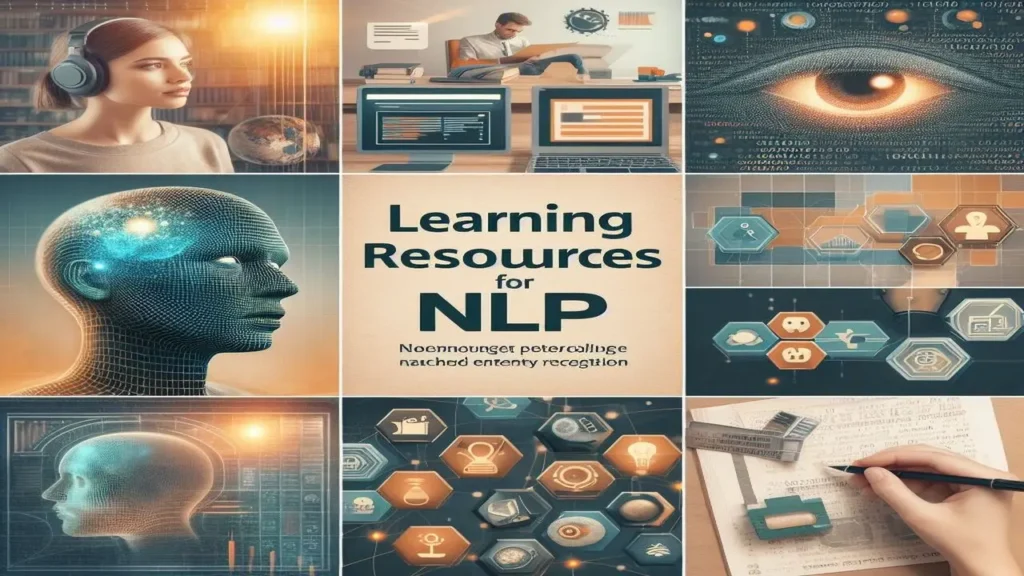
Blogs and Visual Learning Resources
- Amit Chaudhary’s blog “Visual guides to NLP concepts”: Features 19 detailed and well-explained posts about Natural language processing [37].
- Jay Alammar’s blog: Known for high-quality Natural language processing posts, including The Illustrated BERT, ELMo, and co., The Illustrated Transformer, and How GPT3 Works – Visualizations and Animations [37].
- “How to solve 90% of NLP problems: a step-by-step guide” by Towards Data Science: Explains how to build Machine Learning solutions for NLP problems [37].
Practical Resources and Notebooks
- “NLP Quickbook” by Nouha Belkessam: A collection of notebooks for practitioners, covering various Natural language processing tasks and themes [37].
- “The Super Duper NLP Repo” by Akshay Bahadur: A collection of Colab notebooks covering a wide array of NLP task implementations [37].
- “A Code-First Introduction to Natural Language Processing” by fast.ai: A course covering traditional Natural language processing topics and recent neural network approaches, addressing ethical issues [37].
Repositories and Progress Tracking
- “NLP progress” by Sebastian Ruder: A repository tracking the progress in Natural Language Processing, including datasets and the current state-of-the-art for common Natural language processing tasks [37].
- “Awesome NLP repo” by Keon: A GitHub repository containing a curated list of resources dedicated to Natural Language Processing [37].
| Resource Type | Resource Name | Description | Reference |
| Book | Modern Deep Learning Techniques in NLP | Overview of deep learning applications in Natural language processing | [37] |
| Online Course | Coursera NLP Specialization | Comprehensive course covering all aspects of Natural language processing | [37] |
| Blog | Visual guides to NLP concepts | Detailed visual explanations of NLP concepts | [37] |
| Practical Notebook | The Super Duper NLP Repo | Practical implementations of NLP tasks | [37] |
| Progress Repository | NLP Progress | Tracks advancements and state-of-the-art in Natural language processing | [37] |
This selection of resources provides beginners and advanced learners alike with a variety of formats and approaches to studying natural language processing, from theoretical insights to practical implementations and current research developments.
NLP and Machine Learning
Machine Learning (ML) significantly enhances Natural Language Processing by automating the creation of analytical models. These models enable systems to learn from data, recognize patterns, and make decisions without human intervention, thus driving advancements in Natural language processing [7].

Key Machine Learning Models in NLP
- Bag-of-Words, TF-IDF: These models transform text data into numerical form that machine learning algorithms can process, facilitating tasks like document classification and sentiment analysis [23].
- Word2Vec, GLoVE: These models generate word embeddings by capturing the contextual meanings of words. They are crucial for tasks that require semantic understanding, such as machine translation and text summarization [23].
Applications of Machine Learning in NLP
Machine Learning’s applications in Natural language processing are diverse, ranging from sentiment analysis to automated translation:
- Sentiment Analysis: ML algorithms can analyze emotions in subjective data such as news articles and tweets, determining customer sentiment towards brands, products, or services [24].
- Recommender Systems and Search Algorithms: ML powers online recommender systems and search algorithms that personalize user experiences on platforms like Google and Facebook [7].
Limitations and Challenges
While ML models are powerful, their effectiveness is contingent on the quality and quantity of the training data. Insufficient or poor-quality data can lead to inaccurate models that do not perform well in practical applications [8].
| ML Model/Technique | Function in NLP | Limitations |
| Bag-of-Words, TF-IDF | Transforms text into numerical data | Sensitive to the quality of input data [23] |
| Word2Vec, GLoVE | Produces embeddings that capture word meanings | Requires large datasets for training [23] |
| Machine Learning Algorithms | Automates model creation for pattern recognition | Dependent on data quality and diversity [8] |
This structured overview highlights how machine learning not only supports but also significantly advances the field of Natural language processing through various models and techniques.
Future Directions in NLP
Expanding the Horizons of Communication Technologies
Natural Language Processing is set to revolutionize communication technologies by enhancing the intuitiveness and capability of chatbots and virtual assistants. These advancements will allow for more complex and context-aware conversations, significantly improving user interaction with AI-driven services [20][21]. Furthermore, Natural language processing is expected to facilitate real-time translation tools, thereby making global communication more seamless and barrier-free [20].

Integration with Advanced Technologies
The future of Natural language processing includes its integration with cutting-edge technologies such as biometrics. This combination will not only refine communication technologies but also pave the way for creating more sophisticated humanoid robotics [17]. Additionally, Natural language processing is evolving to encompass more personalized and context-aware language processing, which will enhance the naturalness and relevance of interactions with machines [42].
Enhancing Accessibility and Personalization
NLP-driven technologies are poised to make digital content more accessible, particularly benefiting individuals with disabilities. Technologies like screen readers, voice interfaces, and speech recognition systems will see significant improvements, making digital platforms more inclusive [20]. Moreover, Natural language processing will revolutionize content creation with automated generators producing highly personalized articles, reports, and creative pieces [20].
Transforming Healthcare and Education
In healthcare, Natural language processing will become an indispensable tool for analyzing medical literature and patient records, aiding in diagnostics and treatment recommendations. This will ensure that medical professionals are kept up-to-date with the latest research and developments [20]. In the educational sector, NLP’s potential for personalized learning experiences and adaptive curriculums will provide valuable feedback to educators, enhancing the learning process [20].
Addressing Ethical Considerations
As Natural language processing becomes more integrated into everyday life, addressing ethical considerations such as privacy, data security, and algorithmic bias will be crucial. Ensuring that these technologies balance convenience with safeguarding user rights will be an ongoing challenge [20].
This table and the detailed points above illustrate the dynamic future directions of Natural language processing, emphasizing its growing impact on various aspects of modern life and its potential to enhance human-computer interaction.
| Aspect | Description | Projected Growth and Trends |
| Market Value | The NLP market is experiencing rapid growth, driven by advancements in AI and the increasing volume of unstructured language data [41][42] . | Expected to grow from $29.1 billion in 2023 to $92.7 billion by 2028 [41] . |
| Regional Contributions | North America currently leads in market value contributions, followed by Asia-Pacific and Europe [41] . | North America holds 36.1% of the market share [41] . |
| Key Applications | NLP applications span across various sectors including healthcare, finance, and customer service [42] . | Chatbots, AI assistants, and real-time translation services are leading applications [41][42] . |
| Emerging Trends | The integration of NLP with AI is setting new standards in language understanding and processing [43] . | Trends include virtual assistants in diverse domains, emotional recognition, and multilingual communication [43] . |
Ethical Considerations in NLP
Addressing Bias and Fairness
Natural Language Processing systems must address potential biases that could perpetuate social inequalities. Discriminatory models not only hinder progress towards a fairer society but also undermine the credibility of AI technologies [26]. Ensuring fairness involves rigorous testing and validation to identify and mitigate biases in Natural language processing applications [26].

Privacy Concerns
Natural language processing models often process vast amounts of personal data, including emails, messages, and social media posts. This raises significant privacy concerns as these models can infer sensitive information about individuals [26]. Protecting user privacy requires the implementation of robust security measures such as data minimization, strong encryption, and clear data usage policies [26].
Transparency and Accountability
The development and deployment of NLP models demand high transparency to foster trust among users. Explainable AI and interpretable models are crucial in making Natural language processing technologies more understandable and accountable to the public [26]. Regulatory oversight can further ensure that these technologies are used responsibly [26].
Combating Misinformation
The misuse of Natural language processing for spreading misinformation and fake news is a growing concern. Effective strategies to combat this issue include implementing robust validation procedures, using trusted data sources, and sophisticated detection techniques to identify and prevent the spread of false information [26].
Ownership and Control of Data
Questions about the ownership and control of text data are pivotal in the context of Natural language processing. Establishing clear guidelines and legal frameworks can help in managing the rights associated with data generated and processed by NLP systems [26].
Surveillance and Monitoring
The use of Natural language processing in surveillance tools can lead to invasive monitoring practices, raising ethical concerns about privacy and civil liberties. It is essential to balance the benefits of such technologies with the need to protect individual rights and freedoms [26].
This table summarizes the key ethical considerations in Natural language processing, highlighting the importance of addressing these issues to foster trust and ensure the responsible use of technology.
| Ethical Issue | Description | Mitigation Strategies |
| Bias and Fairness | NLP models may inadvertently perpetuate biases, affecting fairness. | Implement testing and validation to identify and mitigate biases [26] . |
| Privacy | NLP systems can access and analyze personal data, leading to privacy concerns. | Use data minimization, encryption, and transparent data policies [26] . |
| Transparency | The complexity of NLP models can obscure their functioning, requiring greater transparency. | Develop interpretable models and apply explainable AI principles [26] . |
| Misinformation | NLP tools can be used to create and spread misinformation. | Use validation procedures and trusted data sources to prevent misinformation [26] . |
| Data Ownership | Uncertainties about who owns data processed by NLP systems. | Establish legal frameworks to clarify data ownership and control [26] . |
| Surveillance | Natural language processing can enhance surveillance capabilities, potentially infringing on privacy and freedoms. | Ensure regulatory measures balance technology use with protection of rights [26] . |
Programming Languages and Tools for NLP
Python stands as the most utilized programming language for Natural Language Processing , supported by a robust suite of libraries including NLTK, spaCy, TensorFlow, PyTorch, and Hugging Face [23]. Its popularity is largely due to its clear semantics, straightforward syntax, and extensive support for integration with other languages and tools [44]. The language is enriched with a plethora of Natural language processing libraries such as NLTK, TextBlob, CoreNLP, Gensim, spaCy, PolyGlot, scikit-learn, and Pattern, making it a versatile tool for various NLP tasks [44].
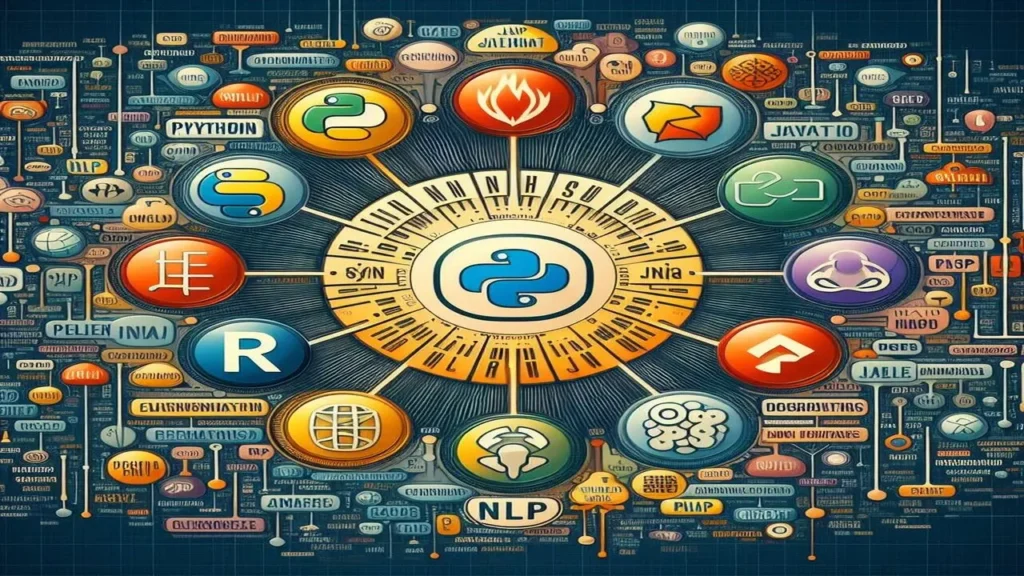
Java also plays a significant role in Natural language processing, particularly useful in areas such as full-text search, clustering, extraction, and tagging. Libraries like Apache OpenNLP and Apache UIMA enhance Java’s capability to handle complex NLP projects [44]. Similarly, R, known for its prowess in statistical learning, is integral in big data analytics and learning analytics. It supports Natural language processing projects through libraries like ggplot2 and knitr [44].
Among the Python libraries, Gensim specializes in high-speed, scalable topic modeling, adept at recognizing text similarities and managing document navigation and indexing [45]. Another notable Python library, spaCy, offers rapid processing capabilities and a range of pre-trained NLP models, making it ideal for preparing text for deep learning or extraction tasks [45].
IBM Watson extends its AI capabilities to Natural language processing, offering services like Natural Language Understanding which include identifying keywords, emotions, and categories. This makes it particularly useful across various industries, including finance and healthcare [45]. The Natural Language Toolkit (NLTK) is another significant tool that allows the creation of Python programs compatible with human language data, supporting a wide array of text processing tasks [46].
Java’s functionality extends beyond typical applications; it is an object-oriented language with simple syntax and efficient debugging features. It is particularly favored for developing mobile apps that rely on artificial intelligence and supports major big data processing technologies like Apache Hive, Apache Hadoop, and Apache Spark [46]. In the realm of R, the tm (Text Mining) and quanteda packages are specifically tailored for NLP tasks, enhancing its utility in statistical computing and data analysis [46].
This table encapsulates the diverse array of programming languages and tools integral to Natural language processing, highlighting their specific applications and contributions to the field.
| Programming Language | Key Libraries/Tools | Applications |
| Python | NLTK, spaCy, TensorFlow, PyTorch, Hugging Face, TextBlob | Text processing, machine learning, data analysis |
| Java | Apache OpenNLP, Apache UIMA | Full-text search, clustering, tagging |
| R | ggplot2, knitr, tm, quanteda | Statistical learning, big data analytics |
Key Techniques in NLP
Natural Language Processing employs a variety of techniques to enhance the interaction between humans and machines through language. These techniques are foundational to various applications ranging from sentiment analysis to machine translation and information retrieval.

Speech Recognition and Chatbots
- Speech Recognition: Natural language processing enables tools like Google Now, Alexa, and Siri to interpret spoken language and convert it into a machine-readable format, facilitating user interaction with devices using natural language [24].
- Chatbots: NLP-based chatbots are built to handle complicated demands, making conversational interactions more intuitive. These systems can automatically respond to user inquiries, providing information and support in a conversational format [24].
Question-Answer Systems and Text Summarization
- Question-Answer Systems: Systems like IBM’s Watson utilize Natural language processing to provide answers to user queries with a high degree of language understanding. This capability allows for effective customer service and information retrieval without human intervention [24].
- Text Summarization: NLP techniques can condense lengthy texts into shorter versions while preserving the original content’s meaning. This is particularly useful in situations where quick information digestion is necessary, such as summarizing news articles or research papers [24].
Machine Learning in NLP
- Supervised Learning: Involves training a model on tagged or annotated text documents to identify patterns and relationships between words and phrases. This approach is widely used in tasks such as sentiment analysis and text classification [25].
- Unsupervised Learning: Trains models on untagged text documents, allowing the system to identify patterns and relationships without explicit guidance. This method is useful in exploratory data analysis and discovering hidden structures in text data [25].
- Hybrid Approaches: Combining both supervised and unsupervised learning with rules-based methods enhances the accuracy and reliability of Natural language processing systems. This integrated approach is beneficial in complex applications where both pattern recognition and rule compliance are necessary [25].
| Technique | Description | Applications |
| Speech Recognition | Converts spoken language into digital text that machines can process. | Voice-activated assistants, Dictation tools |
| Chatbots | Automated systems that simulate human conversation to respond to user queries. | Customer support, Interactive systems |
| Question-Answer Systems | Intelligent systems that use NLP to understand and respond to user inquiries. | Information kiosks, Help desks |
| Text Summarization | Reduces the length of text documents while maintaining key information and meaning. | News aggregation, Academic research |
| Supervised Learning | Uses annotated data to train models that can categorize or predict outcomes based on text data. | Sentiment analysis, Classification tasks |
| Unsupervised Learning | Learns patterns from untagged data to discover relationships and structures in text. | Data exploration, Clustering |
| Hybrid Approaches | Combines machine learning methods with rule-based systems to improve NLP accuracy and reliability. | Complex NLP tasks, Robust systems |
This detailed exploration of Natural language processing techniques underscores their critical role in enhancing machine understanding and processing of human language, which is pivotal for various technological and business applications.
Challenges in NLP
Contextual Ambiguities and Homonyms
Contextual words and phrases along with homonyms present significant challenges in Natural language processing. These words or phrases may have different meanings based on the context in which they are used, complicating tasks such as question answering and speech-to-text conversion [47].
Handling Synonyms
Synonyms pose a challenge as different words can express similar ideas, which can lead to misunderstandings in text analysis. Although models improve with more relevant training data, there is still a possibility of error when interpreting synonyms [47].
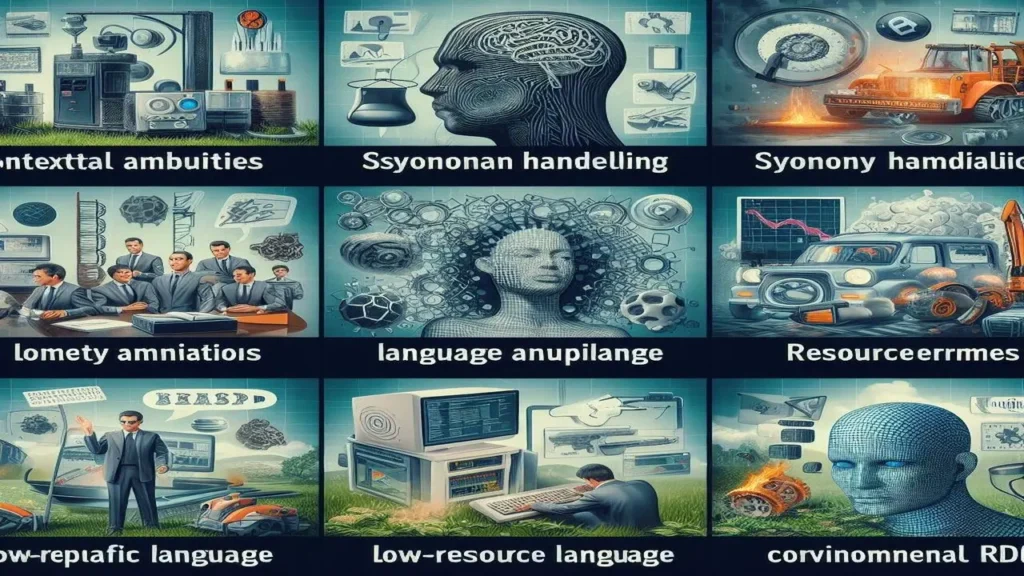
Irony and Sarcasm Detection
Irony and sarcasm are particularly problematic for NLP models because they typically use words that may appear positive or negative but imply the opposite meaning, complicating sentiment analysis [47].
Ambiguity in Language
Ambiguity in language, whether lexical, semantic, or syntactic, refers to phrases or sentences that can be interpreted in multiple ways. This multiplicity of interpretations poses a challenge for accurate language processing [47].
Errors in Text and Speech
Errors in text, such as misspellings or misuse of words, and speech peculiarities like accents or stutters, can significantly hinder the effectiveness of text analysis and speech recognition systems [47].
Colloquialisms and Slang
The use of informal language, including idioms and slang, varies widely across different cultures and communities, presenting challenges in maintaining the accuracy and relevancy of Natural language processing models. Regular updates and training on custom models are essential for handling such language variations [47].
Domain-Specific Language
The language used across different industries and businesses can vary greatly, necessitating the development of specialized NLP tools that are trained to understand and process such domain-specific language effectively [47].
Low-Resource Languages
Many languages, particularly those spoken by communities with limited access to technology, are underrepresented in NLP applications. This lack of resources results in less effective or non-existent NLP tools for these languages [47].
Continuous Research and Development
Ongoing research and development are crucial as the field of Natural language processing is constantly evolving. The effectiveness of Natural language processing models correlates with the amount and quality of data they are trained on, which continues to grow along with advancements in machine learning techniques [47].
Bias and Environmental Impact
NLP models can inadvertently replicate and amplify biases present in their training data. Additionally, the environmental impact of training large language models is a growing concern due to the significant computational resources required [23].
| Challenge | Description | Impact on NLP Systems |
| Contextual Ambiguities | Words or phrases have different meanings depending on context. | Complicates text and speech processing |
| Synonym Handling | Different words expressing similar ideas lead to interpretation challenges | Affects text analysis accuracy |
| Irony and Sarcasm | Words with opposite implied meanings complicate sentiment analysis | Reduces model sentiment accuracy |
| Language Ambiguity | Phrases or statements that can be construed in several ways | Leads to processing inaccuracies |
| Text and Speech Errors | Misspellings, misused words, and speech peculiarities hinder analysis | Impacts text and speech recognition |
| Colloquialisms and Slang | Informal language varies widely, affecting model accuracy | Necessitates frequent model updates |
| Domain-Specific Language | Specialized language across different industries requires tailored NLP tools | Requires industry-specific models |
| Low-Resource Languages | Limited technological access results in underrepresented languages in NLP applications | Leads to inequitable NLP capabilities |
| Continuous R&D | Constant evolution of language and technology demands ongoing research and model training | Essential for maintaining model relevancy |
| Bias and Environmental Impact | Replication of biases and significant computational resource usage | Affects fairness and sustainability |
This structured overview highlights the multifaceted challenges faced in the field of Natural language processing, emphasizing the need for continuous improvement and adaptation of technologies to overcome these obstacles effectively.
Conclusion
Through our investigation of Natural Language Processing (NLP), we have discovered the fundamental components, numerous applications, and critical role of AI and machine learning in progressing this subject. The journey from its inception to future projections demonstrates NLP’s transformative impact in a variety of industries, improving communication, accessibility, and information management. This critical investigation not only highlights the intricacies of human language processing, but also foreshadows future breakthroughs that promise to bridge the gap between human cognition and machine understanding.
As we conclude, it is clear that, while Natural language processing is a beacon of technological development, it also poses ethical issues and necessitates ongoing growth to address biases, privacy concerns, and the environmental impact of AI advancements. NLP’s consequences extend far beyond simple text and speech processing, permeating the cultural and social fabric of our digital and real-world interactions. In order to fully exploit the power of Natural language processing to innovate and enrich human-machine interactions, a balanced approach that prioritizes ethical considerations, continuing research, and the mitigation of potential constraints is required.
FAQs
What are the initial steps a beginner should take to learn NLP?
To start learning Natural Language Processing as a beginner, follow these seven steps:
- Step 1: Learn the fundamentals of Python and Machine Learning.
- Step 2: Understand the basics of deep learning.
- Step 3: Get acquainted with Natural language processing 101 and essential concepts in linguistics.
- Step 4: Explore traditional NLP techniques.
- Step 5: Apply deep learning to Natural language processing.
- Step 6: Dive into Natural language processing with transformers.
- Step 7: Engage in building projects, continue learning, and stay updated with the latest in the field.
What are the five critical stages of Natural Language Processing?
The five essential stages in Natural Language Processing include:
- Lexical Analysis: Analyzing the structure and content of words.
- Syntactic Analysis: Understanding sentence grammatical structures.
- Semantic Analysis: Interpreting the meaning of the sentences.
- Discourse Integration: Making sense of the context within which words and phrases are used.
- Pragmatic Analysis: Dealing with the practical aspects of human language usage and understanding language within context.
Is it possible to learn NLP without any cost?
Yes, you can learn Natural Language Processing for free. There are numerous online courses available that cover how computers understand human language. These courses often include creating chatbots, language translation, and emotion analysis in texts. Many of these courses also provide certificates of completion.
What are the seven key steps to begin an NLP project?
When starting an Natural language processing project, follow this pipeline:
- Step 1: Sentence segmentation, which involves dividing text into sentences.
- Step 2: Word tokenization, or breaking sentences into words.
- Step 3: Stemming, which simplifies words to their base forms.
- Step 4: Lemmatization, a more sophisticated approach to reducing words to their lemma or dictionary form.
- Step 5: Stop word analysis, focusing on filtering out common words.
- Step 6: Dependency parsing, analyzing the grammatical structure of a sentence.
- Step 7: Part-of-speech (POS) tagging, identifying each word’s part of speech based on its definition and context.
References
[1] – https://builtin.com/data-science/introduction-nlp
[2] – https://developer.ibm.com/articles/a-beginners-guide-to-natural-language-processing/
[3] – https://callcriteria.com/what-is-nlp-natural-language-processing/
[4] – https://www.ibm.com/topics/natural-language-processing
[5] – https://www.linkedin.com/pulse/components-nlp-ramabharathi-t-g
[6] – https://monkeylearn.com/blog/nlp-ai/
[7] – https://www.marketingaiinstitute.com/blog/7-key-differences-between-nlp-and-machine-learning-and-why-you-should-learn-both
[8] – https://www.lexalytics.com/blog/machine-learning-natural-language-processing/
[9] – https://textinspector.com/5-things-you-should-know-about-big-data-in-nlp/
[10] – https://www.digitalaptech.com/natural-language-processing-definition-techniques-components-and-more/
[11] – https://www.datacamp.com/blog/what-is-natural-language-processing
[12] – https://www.geeksforgeeks.org/history-and-evolution-of-nlp/
[13] – https://www.ironhack.com/us/blog/beyond-siri-the-evolution-of-natural-language-processing-in-ai
[14] – https://en.wikipedia.org/wiki/Natural_language_processing
[15] – https://medium.com/@antoine.louis/a-brief-history-of-natural-language-processing-part-1-ffbcb937ebce
[16] – https://www.linkedin.com/pulse/evolution-natural-language-processing-from-rule-based-systems
[17] – https://www.peppercontent.io/blog/tracing-the-evolution-of-nlp/
[18] – https://cs.stanford.edu/people/eroberts/courses/soco/projects/2004-05/nlp/overview_history.html
[19] – https://www.dataversity.net/a-brief-history-of-natural-language-processing-nlp/
[20] – https://medium.com/@workmania15/the-future-of-natural-language-processing-nlp-revolutionizing-communication-7f5889d22347
[21] – https://www.linkedin.com/pulse/future-natural-language-processing-after-chatgpt-paresh-patil
[22] – https://www.quora.com/What-is-the-future-of-natural-language-processing
[23] – https://www.deeplearning.ai/resources/natural-language-processing/
[24] – https://www.encora.com/insights/natural-language-processing-and-machine-learning
[25] – https://www.projectpro.io/article/machine-learning-vs-nlp/493
[26] – https://analyticssteps.com/blogs/ethical-considerations-natural-language-processing-nlp
[27] – https://www.startus-insights.com/innovators-guide/natural-language-processing-startups/
[28] – https://www.cognilytica.com/10-examples-of-nlp-applications-across-different-industries/
[29] – https://research.aimultiple.com/nlp-use-cases/
[30] – https://www.quora.com/How-does-natural-language-processing-contribute-to-advancements-in-AI
[31] – https://www.analyticsvidhya.com/blog/2021/04/role-of-machine-learning-in-natural-language-processing/
[32] – https://www.qualitestgroup.com/insights/blog/the-importance-of-speech-data-collection-for-natural-language/
[33] – https://iabac.org/blog/the-role-of-natural-language-processing-in-revolutionising-data-analytics
[34] – https://monkeylearn.com/blog/natural-language-processing-techniques/
[35] – https://www.revuze.it/blog/natural-language-processing-techniques/
[36] – https://www.xenonstack.com/blog/natural-language-processing
[37] – https://medium.com/nlplanet/awesome-nlp-18-high-quality-resources-for-studying-nlp-1b4f7fd87322
[38] – https://www.analyticsvidhya.com/blog/2022/01/master-natural-language-processing-in-2022-with-best-resources/
[39] – https://www.quora.com/What-are-the-best-resources-to-learn-NLP-books-videos-websites-papers
[40] – https://www.startus-insights.com/innovators-guide/natural-language-processing-trends/
[41] – https://blog.bccresearch.com/natural-language-processing-industry
[42] – https://www.knowledgehut.com/blog/data-science/nlp-future
[43] – https://deqode.com/blog/2023/12/01/navigating-the-next-wave-top-natural-language-processing-nlp-trends-in-2024/
[44] – https://www.turing.com/kb/which-language-is-useful-for-nlp-and-why
[45] – https://www.nobledesktop.com/classes-near-me/blog/best-natural-language-processing-tools
[46] – https://botpenguin.com/top-5-languages-for-natural-language-processing/
[47] – https://monkeylearn.com/blog/natural-language-processing-challenges/

